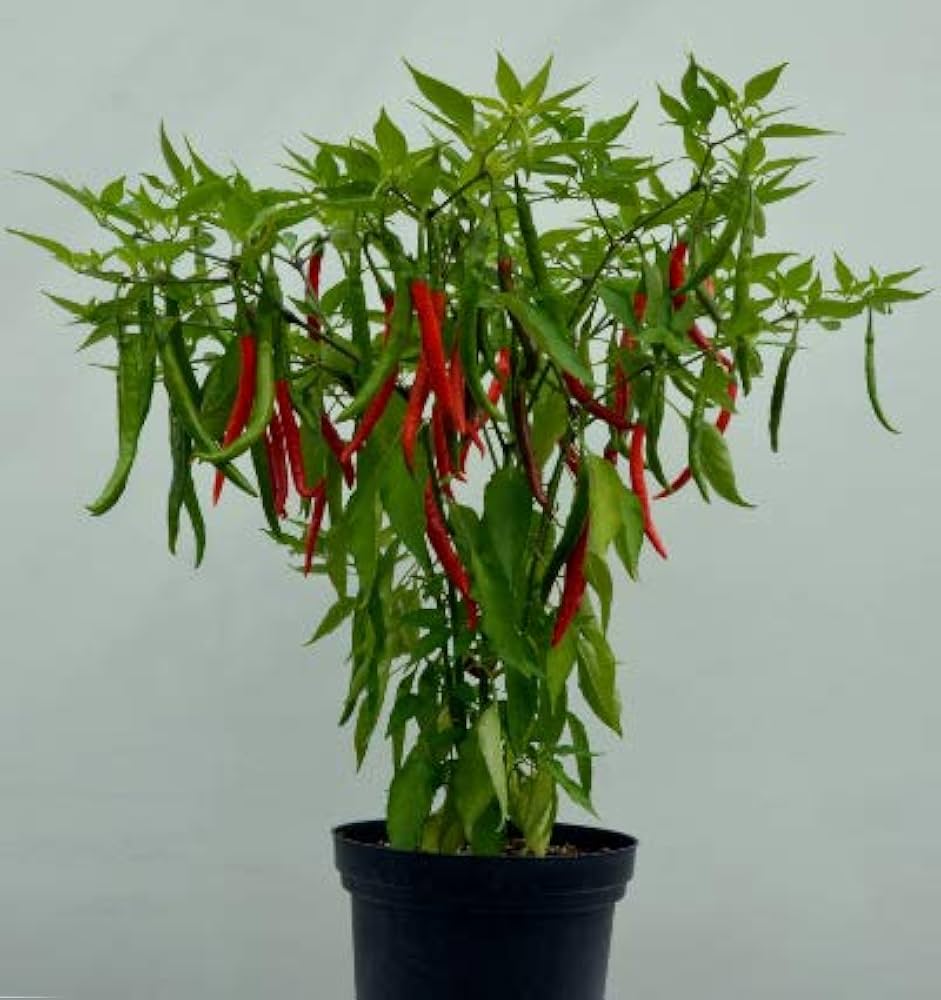Pusa Jwala Chilli
Quantity: 100seeds
Pusa Jwala, a renowned chilli cultivar hailing from India, is revered for its prolific yield and distinctive pod shape. With an elongated, wrinkled structure, these chillies transition from green to vibrant red upon ripening, offering a delightful visual contrast. Renowned for its apple-like taste and notable heat, Pusa Jwala is a staple in Indian cuisine, adding depth and spice to various dishes.
- Pusa Jwala plant will continuously produce chilli for 5/6 months each year.
- With a proper care in frosty time this will survive up to 3 years.
35 in stock
Growing chili peppers in India follows similar methods to those used in other regions, with adjustments made for local climate and soil conditions. Here’s a general overview of chili growing methods in India:
Climate and Soil Requirements Climate: Most chili varieties thrive in warm, tropical climates with plenty of sunlight. India’s diverse climate allows for chili cultivation in various regions, from the humid coastal areas to the arid regions of the interior.
Soil: Chilies prefer well-drained, fertile soil with a pH between 6.0 and 7.0. Sandy loam or loamy soils are ideal. Adding organic matter like compost or farmyard manure improves soil fertility and structure.
Propagation Seed Starting: Start chili seeds indoors in seed trays or pots about 6-8 weeks before the last expected frost date. Use a well-draining seed-starting mix and keep the soil consistently moist until seeds germinate. Transplanting: Transplant seedlings to the garden or field when they have developed several true leaves and are 4-6 inches tall. Ensure the soil has warmed up sufficiently, as chilies are sensitive to cold temperatures.
Planting Spacing: Space chili plants about 30-45 cm apart, with rows spaced 60-75 cm apart to allow for adequate airflow and sunlight penetration.
Planting Depth: Plant seedlings at the same depth as they were in the seed trays, ensuring the soil is firmly pressed around the roots. Irrigation Watering: Provide consistent moisture to chili plants, especially during flowering and fruiting stages. Water deeply but infrequently to encourage deep root growth and prevent waterlogging.
Drip Irrigation: Drip irrigation systems are commonly used in commercial chili cultivation to deliver water directly to the root zone and reduce water wastage.
| Weight | 10 g |
|---|







Reviews
There are no reviews yet.